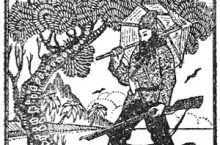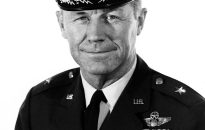PJ Williams remembers the days in the heart of summer workouts when the big wooden sled would come out. Fellow SMU offensive linemen would hop on the sled and players would take turns pushing it 10 yards or 15 yards, sometimes with three or four beefy blockers standing on it. The 6-foot-5, 317-pound tackle knows […]


PJ Williams remembers the days in the heart of summer workouts when the big wooden sled would come out.
Fellow SMU offensive linemen would hop on the sled and players would take turns pushing it 10 yards or 15 yards, sometimes with three or four beefy blockers standing on it.
The 6-foot-5, 317-pound tackle knows the importance and value behind drills that head football strength coach and assistant athletic director for human performance Shawn “Griz” Griswold guides players through outside of the season.
That sled drill is not just about being strong and flashy enough to move a massive amount of weight.
For Williams, it helped improve how he gets off the ball at the snap and the acceleration he can bring to blocking for SMU’s offense.
Conditioning and strength training for a football season begins in January right after the previous season ends. The work can prove crucial to a team’s performance in the fall.
SMU is enjoying a successful season in the ACC. They went 11-2, made an appearance in the conference title game and will play Penn State on Saturday in the first round of the College Football Playoff.
In the CFP, the buildup of years of work will be on display. Teams that can stay healthy and strong throughout what could be the first 17-game season in college football history will have an edge in the race to win a national championship.
The Mustangs have invested heavily in their strength program in recent years, building an 18,000-square-foot weight room, hydrotherapy and sports medicine area in the recently-opened Weber End Zone Complex.
Leaders in the program say SMU is reaping rewards of an all-in training mentality.
“It’s all kind of the one conglomerate,” Griswold told LoneStarLive.com. “Human performance is really everybody. That’s how we do it.”
Adding data
Before SMU debuted in the ACC this season and the first 12-team CFP field was set, the Mustang coaching staff didn’t feel the need to overhaul what they were doing to accommodate the potential of a 17-game season.
The strength staff learned from an AAC Championship-winning season in 2023, but knew they were on to something when the team played some of its best football in the final month of the season.
One of the key tools SMU can use in training is data, which the team gets through Catapult, a performance technology developed in Australia and used by over 4,200 teams globally, according to the company’s website.
Wearable technology developed by Catapult can be put in a player’s shoulder pad or in a special harness that has a GPS tracking system.
The technology gives SMU’s staff a daily report on player speeds, loads and explosiveness through practice or during training.
This data is all used by Griswold and position coaches to know where players need work, if a player needs to manage their load or any nutrition work that could affect performance.
In the week prior to SMU’s CFP game, Griswold was making sure to check that running backs Brashard Smith, LJ Johnson Jr. and Derrick McFall were hitting the proper numbers before trying to speed their way through defenders on the football field.
“It’s all part of the puzzle. You just gotta make sure it fits right. There’s a fine balance between too much and too little,” Griswold said. “But those are the constant maintenance things that people just don’t realize are part of the puzzle.”
Fine tuning practice
The puzzle pieces don’t just include the work Griswold is doing in weight and training sessions.
Griswold is heavily involved in how practices operate. Constant communication is of the utmost importance for Griswold and the rest of the coaching staff.
It’s also important that Griswold knows what kind of strain is being put on players in practice to make sure they aren’t being overworked elsewhere.
In the 29 years Griswold has been keeping people fit, his current role at SMU has the ”best practice plan I’ve been around” after stints at Virginia, Arizona State and Pitt, among other schools.
The up-tempo offense SMU runs under coach Rhett Lashlee makes fitness even more important.
The Mustangs move down the field quickly, meaning they play more snaps. While fast-paced offenses are more typical now, Griswold’s first exposure to working with one was in 2008 at Tulsa.
Lashlee’s mentor, Gus Malzahn, was the offensive coordinator for Tulsa when Griswold was hired as the director of strength and conditioning.
What Griswold learned in his time at Tulsa helped inform how he views player stamina throughout the course of a game and a season.
“Really, everybody has to be in great shape because typically you score really fast. That means the defense has to go back out,” Griswold said. “Regardless, nowadays hardly anybody’s not up-tempo at some point in a game.”
Wide receivers and defensive backs have to be very aware of their cardio as the positions that spend most of the game running up and down the field.
For receivers coach Rob Likens, making sure the team doesn’t burn out the legs of their receivers is important. He’s seen players lose their legs by the eighth game of the season and once they’re gone, “It’s very, very, very hard to get them back.”
To avoid burnout in games, SMU takes a two-pronged approach: rotating personnel and reducing overall practice time.
SMU worked on adding depth in just about every room on their team ahead of the season. Eight different wide receivers have caught passes this year and Likens says he has at least six guys in active rotation during practice.
Receivers can save those extra reps in practice with a strong rotation between the likes of Key’Shawn Smith, Jordan Hudson and Moochie Dixon.
“We do as good a job as anybody in the country in the way that we practice,” Likens said. “That is always on our mind, the wear and tear. Our practices are set up so that we can be our strongest in this time of the year.”
But a significant change in Likens’ 30-plus years coaching is how long practices are lasting.
Up-tempo offenses require more energy and repetition during a game, so the Mustangs can’t afford to run multi-hour practices.
“Well if you’re going to get more plays in, all right, you can’t still be out there two-and-a-half, three hours,” Likens said. “You’re going to burn the kids out.”
Instead, SMU aims to streamline practices.
They want to get out on the field, get in the important reps, do tempo work in a team setting and get out so the Mustangs can save the legs of their players.
“Some guys haven’t realized that and they keep doing the same thing. Well, yeah, you’re gonna burn them out. You are,” Likens said. “We’ve realized that. We’re not doing 27, 26-period practices. We’re doing 15.”
That can be critical for cornerbacks, who don’t rotate in and out of games as much as wide receivers.
Griswold tries to break up the volume of reps outside practice for defensive backs and receivers by doing two days of training versus front seven guys, who are likely to do three in a week.
“It’s kind of like driving a car at a certain point in time. There’s some wear and tear on that car and the tread on the tires that you gotta be careful of because those guys are gonna run all the time,” cornerbacks coach Rickey Hunley said. “There are times where we’ll scale back some of [their] reps.”
‘Everybody’s hurt’
Wear and tear is felt all over the field.
Most players at this point in the season will admit to dealing with some type of injury or soreness. It doesn’t deter them or serve as an excuse.
“It’s football. Everybody’s hurt, everybody’s banged up,” wide receiver Roderick Daniels Jr. said. “You just gotta be prepared for it. That’s part of the playoffs. The toughest teams are usually who’ll win now.”
Edge rusher Elijah Roberts says at this point in the season the Sundays and Mondays after a game are “very achy, tiring, sore.”
It usually takes until Wednesday night or Thursday morning for Roberts to feel as close to 100% as he says he will get.
Training staffers work especially hard on linemen, who play in the trenches, where Griswold says, “It’s a car crash every play.”
Willams said that late in the season, O-linemen can be dealing with shoulder problems, ankle problems, knee problems and frequent finger problems.
Griswold sees wrist soreness, too.
“You’re going against a lot of real aggressive guys. A lot of wear and tear on your shoulders because you hit people up high or you’re trying to get under the shoulder pads or a helmet,” Williams said.
“You get hit on your shoulder or your fingers get caught in the jersey. Or like it’s a big pile, ankles get rolled over. Defensive linemen, you’ve been bullying them all game, so when it’s his time to bully you, he’s pushing you over the pile.”
The most important part of trying stay healthy for Williams isn’t even done in training.
It’s just trying to stay off the ground during plays.
“It’s good to get pancake [blocks] and it’s good to go over top of them. But for the most part it’s good to stay off the ground,” Williams said. “If you’re trying to pancake somebody, try to pancake at least two yards above the line of scrimmage, not right on the line of scrimmage because that just causes a lot of garbage in the trenches.”
Griswold said his staff excels at helping players stay on the field by avoiding soft-tissue injuries — like sprains, contusions, strains and bursitis.
Those can hit linemen harder than most, but SMU hasn’t been plagued by many injuries this season.
Wide receiver Romello Brinson is the only starter to miss extended time with a soft-tissue injury — bursitis — and he returned for the Mustangs’ playoff run.
A strong weight room culture
Williams likes the attitude that SMU brings to the weight room.
Running backs coach and special teams coordinator Kyle Cooper often evokes a simple acronym that Williams and his teammates use — BAM.
“Just be a man. In the weight room, there’s no time to play, no time really for mistakes,” Williams said. “You don’t really want a mistake in the weight room because that’s a dangerous place to make a mistake.”
Griswold takes pride in the culture that’s been built up in the weight room.
He makes sure players are engaged throughout the season with getting in the weight room and still has them power cleaning weights deep into the season.
The power clean — an essential Olympic weightlifting movement — involves squatting down, pulling the bar up to the knees and scooping for a second pull and catch to the shoulders.
If done incorrectly, the movement can injure a player’s back, shoulders, wrists, elbows or knees.
Some programs might advise against power cleans this late in the season, according to Griswold, but he sees the movement of cleaning the squat as important and also a part in building a culture of physicality.
“I’m not going to get away from that bar. It’s a mindset, it’s culture,” Griswold said. “Some people argue that’s not a good way to do it. I’ll argue that we won 29 games in three years and we won a conference championship last year and we played one this year and we’re 11-1 in November when it matters.
“It’s a gladiator sport at every position. Something about being strong and being a physical young man of like, ‘I feel like I have that strength when I go block somebody, I run through somebody or tackle somebody.’ You need that strength. You can’t just do fancy fufu internet stuff. The nuts and bolts of it are you have to train.”
Safety Jonathan McGill says he’s learned a lot about “withstanding the longevity of the season” from being around SMU’s training staff.
He’s learned to be more proactive about his body since transferring from Stanford and makes sure he isn’t limited because he didn’t get on top of his training ahead of time.
“I wasn’t a guy that got hurt a lot at Stanford,” McGill said. “But [I’m] being able to be more intentional. Let’s say I have a hamstring deficiency for a week. OK, I’m doing something in the training room to make that deficiency go away.”
What Griswold doesn’t want players to forget is that all of this work in strength and conditioning can prepare them for the next level of football.
SMU tries to set its players up to be physically ready for professional competition.
And the Mustangs are hoping to be prepared physically for a 17-game season and a run at the national championship.
“The whole time we’re here, we talk about all the time in recruiting is we’re trying to prepare for what life is like in the NFL: It’s 17-plus games,” Griswold said. “So, that’s our job, too, is to give them the best avenue of what training looks like in season at this level.”
The coaching staff at SMU believes that it can prepare players for the next level while simultaneously getting the most out of them during the season.
It’s no different when it comes to conditioning.
That’s why players remember the sled comes out in the summer, even with an opportunity at a championship ahead.














